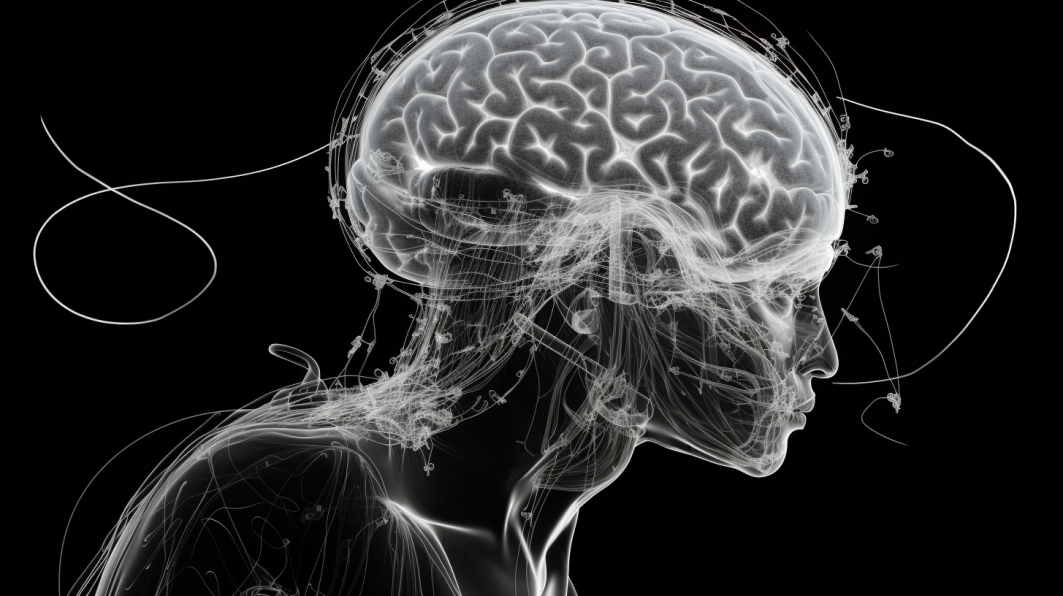A new study published in Frontiers in Psychiatry provides promising evidence that focused ultrasound stimulation of the prefrontal cortex can alleviate depressive behaviors in mice by suppressing inflammatory responses.
Key facts:
- Researchers stimulated the prefrontal cortex of mice with focused ultrasound for 30 minutes.
- Mice treated with ultrasound showed less depressive behaviors compared to sham controls based on forced swimming and tail suspension tests.
- Ultrasound suppressed inflammatory cytokines IL-6, IL-1β, and TNF-α in the prefrontal cortex of lipopolysaccharide-treated mice.
- No tissue damage was found in ultrasound stimulated brains.
- Results indicate focused ultrasound’s potential as a noninvasive treatment for inflammation-linked depression.
Source: Front Psychiatry 2022
Focused Ultrasound (FUS) for Treating Depression: Future Potential
Major depressive disorder is a highly prevalent and disabling mental illness, affecting over 300 million people globally.
Existing treatments have limitations in efficacy and side effects, driving the need for alternative therapies.
Neuromodulation techniques like deep brain stimulation and transcranial magnetic stimulation have shown promise, but are invasive or lack spatial precision.
Focused ultrasound stimulation is emerging as a noninvasive approach capable of modulating brain regions implicated in depression.
By delivering acoustic energy to a brain target, ultrasound can stimulate neuronal activity.
Researchers are now exploring whether this capability could be harnessed therapeutically for patients with mood disorders.
Testing Focused Ultrasound’s Effects in a Mouse Model of Depression
In the new study, researchers investigated whether focused ultrasound targeting the prefrontal cortex could alleviate depressive behaviors in mice.
The prefrontal cortex is involved in regulating emotions and has been studied as a stimulation site for treating depression.
To model depression, the researchers injected mice systemically with the bacterial inflammagen lipopolysaccharide.
This immune challenge triggers release of inflammatory cytokines and induces depressive-like behaviors in mice.
The team applied focused ultrasound to the prefrontal cortex for 30 minutes under anesthesia starting 6 hours after lipopolysaccharide injection.
Sham controls received no ultrasound stimulation.
After 24 hours, they tested the mice’s depressive behaviors using forced swimming and tail suspension tests that measure immobility time as an indicator of despair.
Ultrasound Stimulation to Prefrontal Cortex & Antidepressant Effects

The researchers found that focused ultrasound stimulation to the prefrontal cortex markedly decreased immobility time compared to sham controls in both behavioral assays.
This suggests the ultrasound treatment alleviated the depressive behaviors induced by inflammation.
The mice receiving ultrasound also showed less anxiety based on increased open arm exploration in an elevated plus maze test.
Overall, the results indicate focused ultrasound stimulation elicited robust antidepressant- and anxiolytic-like effects in the lipopolysaccharide depression model.
Possible Mechanism: Inflammation Reduction
Next, the team evaluated whether focused ultrasound produced changes in inflammatory signaling within the prefrontal cortex that could explain the antidepressant effects.
Western blots revealed ultrasound significantly decreased lipopolysaccharide-induced increases in the inflammatory cytokines IL-6, IL-1β, and TNF-α in the prefrontal cortex.
There was also a correlation between cytokine levels and depressive behaviors across groups.
This suggests focused ultrasound may alleviate depressive symptoms, at least partially, by suppressing neuroinflammation triggered by immune activation.
This anti-inflammatory effect aligns with other brain stimulation techniques like TMS.
Assessing Safety of Focused Ultrasound Neuromodulation
An important consideration for any neuromodulation therapy is safety.
The researchers used histological stains to check for tissue damage in the ultrasound stimulated brains.
No abnormalities were found, indicating the ultrasound parameters used were safe.
Still, caution is warranted given focused ultrasound’s potential to induce tissue heating.
The field is actively working to develop simulation tools and monitoring methods to ensure therapeutic parameters are safe.
Future Outlook: Translating Focused Ultrasound for Depression
This study provides key preclinical evidence that noninvasive focused ultrasound stimulation targeting the prefrontal cortex could offer a new strategy to alleviate depressive symptoms linked to neuroinflammation.
If results hold up, focused ultrasound could one day provide an alternative to medications and invasive brain stimulation for depression.
But first, researchers must perform trials in higher animal models and humans to further demonstrate efficacy and safety.
Key next steps will include optimizing and validating ultrasound parameters that balance maximal neuromodulation with minimal risks.
Researchers will also need to assess effects on additional depressive behaviors and combine ultrasound with inflammatory challenge models that better mimic clinical depression.
With further research, focused ultrasound holds unique potential as a flexible, noninvasive option for targeted neuromodulation.
Ultrasound could be applied in repeated sessions as an acute intervention for inflammation-related depressive episodes or residual symptoms.
Overall, by elucidating ultrasound’s anti-inflammatory effects in the prefrontal cortex, this study significantly advances focused ultrasound as an emerging therapeutic possibility for managing depression.
Findings open new avenues in exploring ultrasound’s antidepressant mechanisms and translation toward clinical use.
References
- Study: Ultrasound stimulation of prefrontal cortex improves lipopolysaccharide-induced depressive-like behaviors in mice
- Authors: Sha-sha Yi et al. (2022)







